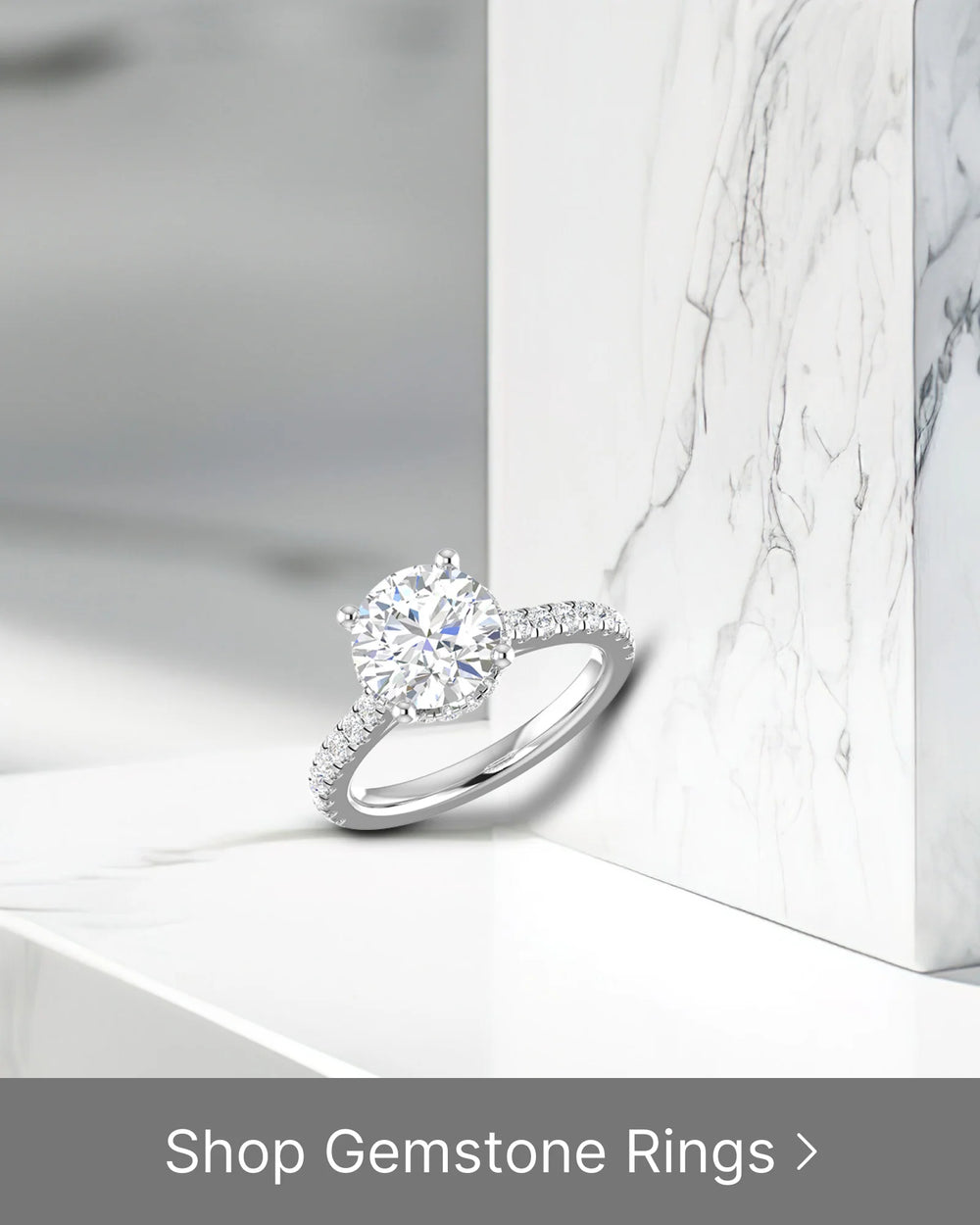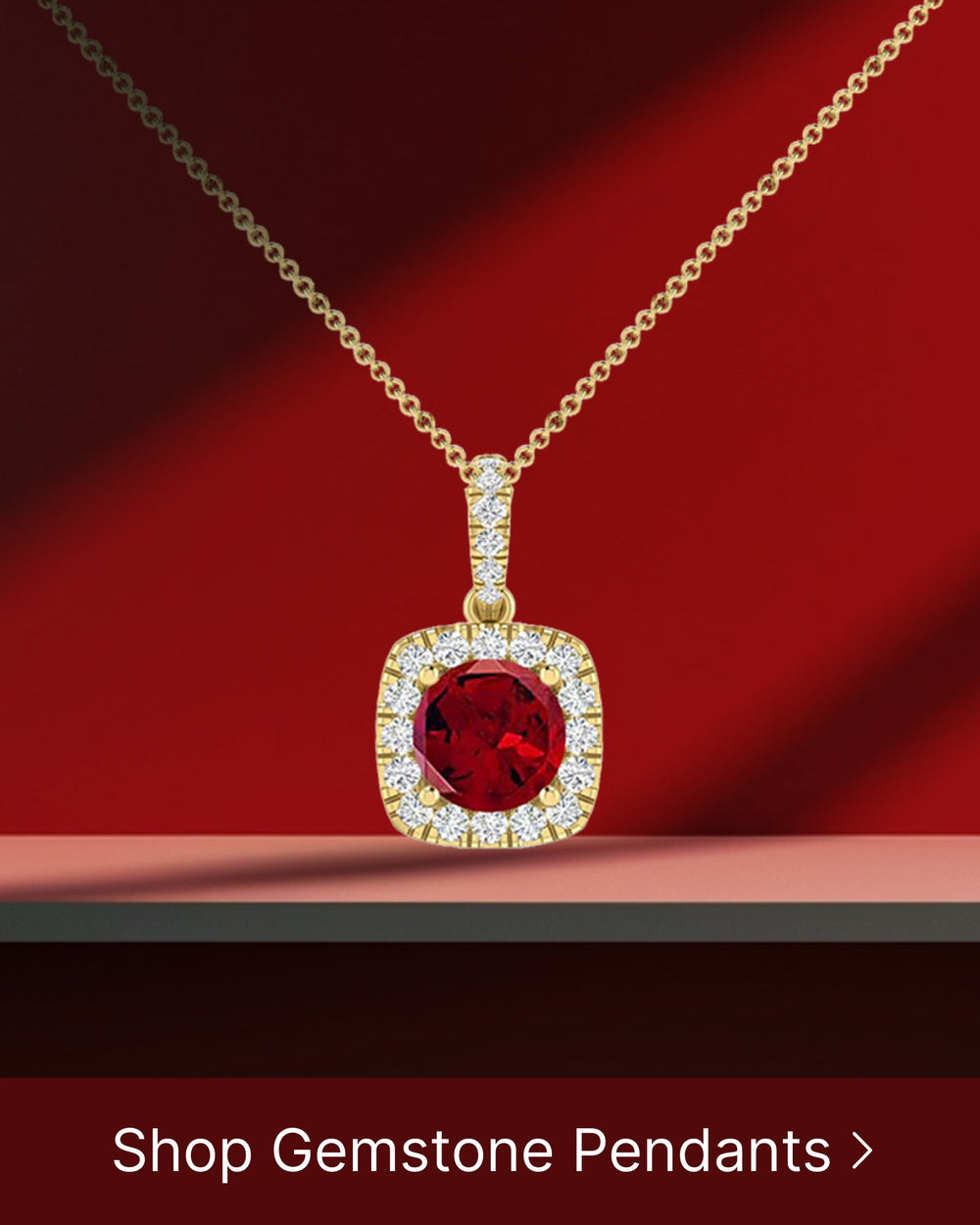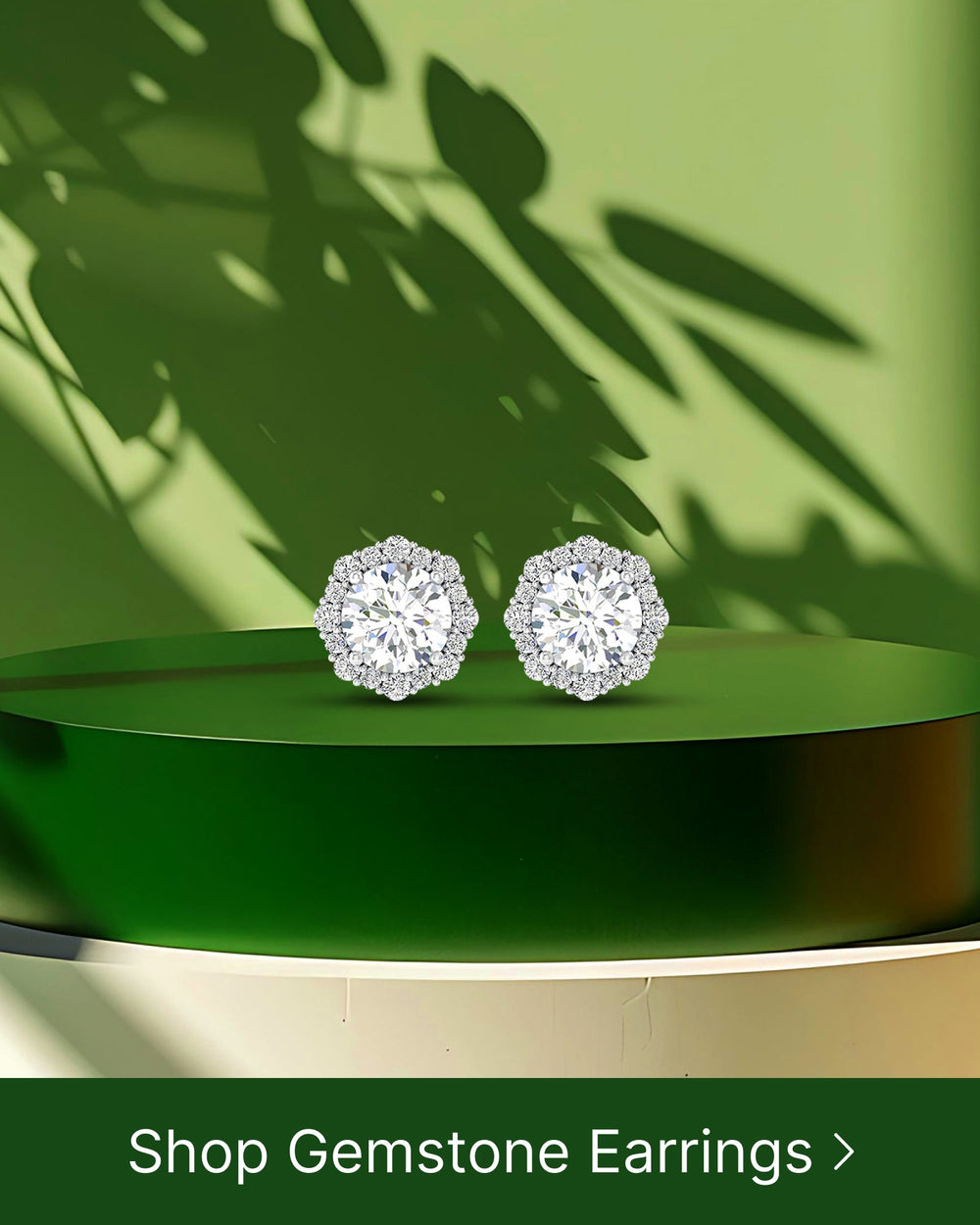Diamonds have long been the go-to choice for those seeking beautiful and timeless jewelry. However, not everyone can afford the steep price tag that comes with diamond jewelry. Thankfully, there are diamond alternatives available in the market that offer the same sparkle and elegance without breaking the bank. In this article, we will delve into the world of diamond replacement stones and explore the best options for your jewelry.
Understanding Diamond Alternatives
Diamond alternatives are gemstones that mimic the look of diamonds but are created in a laboratory or occur naturally. These stones are carefully crafted to possess similar characteristics to diamonds, such as brilliance, clarity, and durability. Their affordability and close resemblance to diamonds make them an attractive choice for those looking to add some sparkle to their jewelry collection.
When it comes to diamond alternatives, there is a wide variety of options to choose from. Each alternative stone has its own unique properties and appeal, making them suitable for different preferences and budgets.
What are Diamond Alternatives?
Diamond alternatives encompass a range of gemstones that are used as substitutes for diamonds in jewelry. Some of the most popular options include moissanite, white sapphire, and cubic zirconia.
Moissanite is a lab-created gemstone that has gained popularity for its diamond-like appearance. It is known for its exceptional brilliance and fire, often surpassing that of diamonds. This makes it a great choice for those who desire maximum sparkle and want to make a statement with their jewelry.
White sapphire, on the other hand, is a natural gemstone that closely resembles diamonds. It is valued for its clarity and durability, making it an excellent alternative for those who prioritize these qualities in their jewelry.
Cubic zirconia, another popular diamond alternative, is a synthetic gemstone that offers affordability without compromising on beauty. It is known for its flawless appearance and can be found in a wide range of colors, allowing for more creative and unique jewelry designs.
Why Choose Diamond Alternatives?
There are several reasons why choosing diamond alternatives can be a smart decision. Firstly, diamond alternatives are significantly more affordable than natural diamonds, allowing you to get a stunning piece of jewelry without draining your bank account.
Moreover, diamond replacement stones like moissanite offer even more brilliance and fire than diamonds. This means that you can achieve a dazzling look without the hefty price tag associated with diamonds. Whether you're looking for an engagement ring or a pair of earrings, diamond alternatives provide an opportunity to create a stunning piece of jewelry that will catch everyone's attention.
Additionally, opting for diamond alternatives can be a more ethical choice. Natural diamonds are often associated with ethical concerns, such as conflict diamonds or environmental damage caused by mining. By choosing lab-created or naturally occurring alternatives, you can have peace of mind knowing that your jewelry is more environmentally friendly and socially responsible.
Finally, diamond alternatives offer a wider range of options in terms of colors and designs. While diamonds are typically colorless, alternatives like moissanite and cubic zirconia can be found in various hues, allowing for more personalized and unique jewelry creations.
In conclusion, diamond alternatives provide an affordable, ethical, and versatile option for those who desire the beauty and sparkle of diamonds without the high price tag. Whether you choose moissanite, white sapphire, or cubic zirconia, these gemstones offer a stunning alternative that will make your jewelry collection shine.
Evaluating the Quality of Diamond Replacements
When considering diamond replacements, there are certain factors you should consider to ensure you are making the right choice. These factors include hardness and durability, brilliance and fire, as well as color and clarity.
Hardness and Durability
One important aspect to evaluate when choosing a diamond replacement stone is its hardness and durability. While diamonds are known for being the hardest substance on earth, some alternatives come close. Moissanite, for example, is nearly as hard as a diamond, making it a durable option for everyday wear.
Moissanite, a naturally occurring mineral, was first discovered in a meteor crater. It is composed of silicon carbide and has a unique crystal structure that gives it its exceptional hardness. This hardness ensures that moissanite can withstand daily wear and tear without easily scratching or chipping.
Furthermore, moissanite's durability extends beyond its hardness. It is also highly resistant to heat, making it suitable for various jewelry settings. Whether you prefer a solitaire ring or a more intricate design, moissanite can withstand the demands of everyday life while maintaining its brilliance.
Brilliance and Fire
The brilliance and fire of a gemstone refer to its ability to reflect light and create sparkle. Moissanite is particularly renowned for its exceptional brilliance and fire, often surpassing that of diamonds. Its high refractive index allows it to disperse light in a way that creates a mesmerizing play of colors.
When light enters a moissanite gemstone, it is refracted and dispersed into a stunning display of spectral colors. This phenomenon, known as the "rainbow effect," adds to the stone's overall beauty and allure. The combination of brilliance and fire in moissanite makes it an excellent choice for those seeking a captivating and eye-catching alternative to diamonds.
White sapphires also possess a beautiful sparkle, although they may have less fire compared to moissanite. Their brilliance is more subtle and elegant, creating a sophisticated and timeless look. The soft glow of a white sapphire can add a touch of understated glamour to any piece of jewelry.
Color and Clarity
Color and clarity are two important characteristics to consider when choosing a diamond replacement stone. Moissanite is known for its near-colorless quality, resembling the appearance of a high-quality diamond. Its color grading ranges from D to J on the diamond color scale, with D being the most colorless.
Moissanite's near-colorless nature ensures that it will not have any noticeable yellow or brown undertones, giving it a bright and clear appearance. This color consistency makes it an excellent choice for those seeking a diamond alternative that closely resembles the beauty of a traditional diamond.
On the other hand, white sapphires can exhibit varying degrees of color, from perfectly white to slightly tinted. The presence of any color in a white sapphire can add a unique character to the stone, making it a more individualistic choice for those who appreciate a touch of personality in their jewelry.
Cubic zirconia is a colorless stone that closely resembles diamonds but may lack the same level of clarity. While it can mimic the appearance of a high-quality diamond, cubic zirconia may have slight imperfections or inclusions that can affect its clarity. However, these imperfections are often not visible to the naked eye and do not detract significantly from the stone's overall beauty.
When evaluating the color and clarity of a diamond replacement stone, it is essential to consider your personal preferences and the specific qualities you desire in a gemstone. Whether you prioritize a colorless and flawless appearance or prefer a stone with unique characteristics, there is a diamond alternative that can meet your needs.
Popular Diamond Replacement Stones
Now that we have explored the qualities to look for in a diamond replacement stone, let's dive into some of the most popular options available in the market.
Moissanite: The Closest to Diamond
Moissanite is often considered the closest diamond alternative in terms of brilliance and durability. This lab-created gemstone possesses a dazzling sparkle that rivals that of diamonds. With its excellent durability and affordability, moissanite has become a popular choice for engagement rings and other jewelry pieces.
White Sapphire: The Natural Alternative
White sapphire is a natural gemstone that offers a captivating brilliance and clarity. While it may not match the sparkle of moissanite or diamonds, white sapphire's natural beauty and subtle sparkle make it an attractive option for those seeking a more understated look.
Cubic Zirconia: The Affordable Choice
If affordability is your primary concern, then cubic zirconia is an excellent option to consider. This lab-created gemstone closely resembles diamonds and offers a captivating sparkle at a fraction of the price. While cubic zirconia may not possess the same level of durability as moissanite or white sapphire, it is still a popular choice for those looking for budget-friendly jewelry.
Caring for Your Diamond Replacement Jewelry
Proper care and maintenance are essential to ensure the longevity of your diamond replacement jewelry.
Cleaning and Maintenance Tips
To clean your diamond replacement jewelry, use a soft-bristle brush and mild soap to gently scrub away any dirt or oils. Avoid using harsh chemicals or ultrasonic cleaners, as these can damage the stone. Regularly inspect your jewelry for any loose stones or signs of wear and have it professionally cleaned and inspected if necessary.
Protecting Your Jewelry from Damage
To protect your diamond replacement jewelry, remove it before engaging in activities that may expose it to potential damage, such as sports or heavy manual work. Store your jewelry in a soft pouch or jewelry box to prevent scratching and keep it away from direct sunlight or extreme temperatures.
Making the Right Choice: Factors to Consider
When deciding on the best diamond replacement stone for your jewelry, there are a few factors you should consider to ensure it aligns with your needs and preferences.
Your Budget
One of the primary considerations when choosing a diamond replacement stone is your budget. Determine how much you are willing to spend and explore options within that range. Remember that diamond alternatives offer varying price points, allowing you to find something that suits your financial situation.
Your Lifestyle
Your lifestyle and daily activities should also influence your choice of diamond replacement stone. If you lead an active lifestyle or work in a profession where your jewelry may be subjected to frequent wear and tear, opt for a more durable option like moissanite.
Your Personal Style
Last but not least, consider your personal style and the type of jewelry that resonates with you. Each diamond replacement stone has its own unique characteristics, so choose the one that speaks to your aesthetic preferences and reflects your individuality.
In conclusion, diamond replacement stones offer an excellent alternative for those looking to add sparkle to their jewelry collection without the hefty price tag of diamonds. Whether you opt for moissanite, white sapphire, or cubic zirconia, each stone has its own appeal and merits. By evaluating factors such as hardness, brilliance, color, and clarity, you can make an informed choice that suits your budget, lifestyle, and personal style. With proper care and maintenance, your diamond replacement jewelry will continue to shine brightly for years to come.





